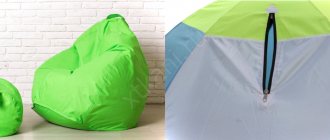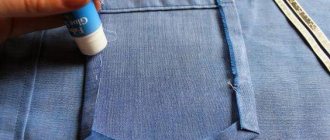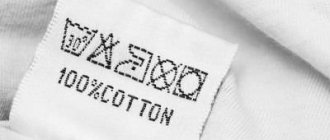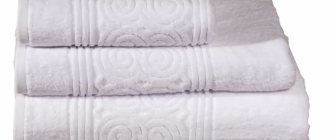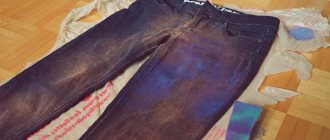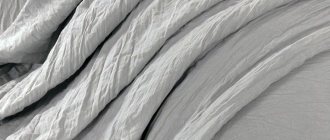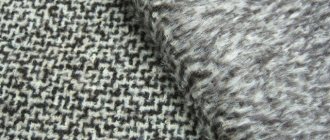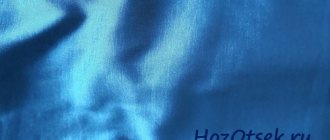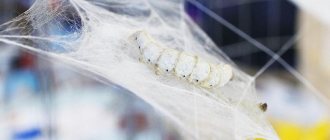Air curtains, tablecloths and clothing items cannot be imagined without the use of this material. Transparent fabric came into our lives a long time ago and today does not lose its relevance. Not only are clothes and curtains sewn from lightweight fabrics, but they are also widely used to create stage costumes or in interior drapery for the antique style.
Types of silk fabric
Fine fabrics containing silk:
- Atlas
- Crepe
- Silk blue
- Crepe de Chine
- Organza
- Silk-Chiffon
- Italian silk
- Crepe fabric
- Plain silk
- Wet silk
- Printed silk
- Natural silk
- Satin silk
- White silk
- Crash
- Twill
- Linen
- Wool with silk
- Satin
- Viscose fabric
- Silk organza
- Elite silk
- Black and white silk
Most Popular:
- Satin is a dense silk fabric created by a satin weave. Features a shimmering smooth surface. It can be printed or plain-dyed. White satin is the main wedding fabric.
- Chiffon is light, transparent, airy. Plain or printed, ideal for flowy silhouettes, romantic dresses, blouses, skirts.
- Crêpe de Chine – literally “Chinese crepe”. A type of crepe fabric characterized by a matte, rough surface. One of the most popular silk fabrics.
- Organza is a thin, transparent, rigid fabric, perfect for creating voluminous models.
- Taffeta is a dense, flexible, “sculptural” fabric. The optimal choice for evening and wedding dresses.
Features of cutting and processing transparent fabrics
Light and airy materials make beautiful holiday outfits; they are comfortable and do not restrict movement; they never get hot. Draped clothing suits any figure; it perfectly hides imperfections and creates a romantic look. However, cutting and sewing such fabric requires certain skills and knowledge of seams for the edges.
Features of working with thin fabrics:
- The material is very slippery and before cutting the table needs to be covered with flannel or felt. Use the tool with a thin cut so as not to wring the fabric or make puffs. The optimal needle size for sewing is no larger than No. 70.
- When marking for cutting, you need to use a special marker, which disappears from the surface after 6-8 days when exposed to light. A simple pencil can leave marks on the material, and the product will have to be washed immediately after sewing.
- The edges of the fabric are immediately overlocked; if this is not possible, then a double seam is made with a hem, and the cuts are processed with a bias tape or a special edging.
- It is better to sew the fabric on a machine with a paper tape backing, this way you will avoid puffs and the seam will be even.
- When sewing clothes, they do not make undercuts, which look sloppy, but use soft folds.
Sheer fabrics are very delicate and prone to puffiness. Remove everything unnecessary from the table when working with the material, this will save you from removing elongated threads. You can remove the puff by pulling the canvas with both hands in different directions, but this does not guarantee that you will get rid of it without a trace.
What silk fabrics can be bought in the TISSURA online store?
In the TISSURA online store you can order not only the above types of silk fabrics. We offer a unique selection of exclusive Italian and French fabrics: “filcoupe”, “matlasse”, “cloke”, “mikado”, “radzimir”, silk jacquards, hand-embroidered fabrics, decorated with original prints specially designed for “TISSURA”, decor, embroidery
Where else, besides an online store, can you buy natural silk?
In TISSURA salons, located in the largest cities of Russia, you can buy silk of the highest quality from the best European manufacturers.
What fabric to choose as a lining for silk? The lining fabric can be thin silk pongee, satin or even knitwear.
Many natural silk fabrics can also be used as linings for silk products.
Caring for Transparent Fabric
Lightweight fabric is difficult to wash and iron, but if you know the basic rules, it won’t cause any trouble. The fabric does not accumulate dust and dirt, but the need to refresh clothes and curtains often arises.
If it is possible to avoid machine washing, it is better to do so. Clothes are simply soaked briefly in water with gel or mild detergent at a temperature of 40 degrees for 20-30 minutes. After expiration, wash by hand in soapy water and rinse in clean water. You cannot use powders or bleaches when caring for delicate fabrics - this will destroy the structure of the fibers.
Light fabrics are not wrung out, but hung on hangers or laid out on a horizontal surface to dry. This will help, if ironing is necessary, to set a low temperature; most materials do not require the use of an iron at all. The clothes are shaken several times and dried, this is enough to keep their shape and give them freshness.
You need to lay out or hang things away from sunlight, this way you will preserve the color and structure of the fibers.
Natural silk - the history of the origin of the fabric
Legends tell that one of the Chinese women happened to see a beautiful sparkling thread being separated from a cocoon that accidentally fell into hot water. And another Chinese woman, whose name is known - Empress Hsi Ling-chi (2640 BC), wanted to grow a mulberry tree.
She grew the tree, but while she was growing it, another person became interested in it - a butterfly, or, more simply, a moth. The butterfly began to feed on the fresh leaves of the young tree and immediately laid grenas on its leaves - small eggs, from which caterpillars soon appeared.
Other legends say that the empress was drinking tea in the garden, and a cocoon fell from a tree into her cup. When she tried to remove it, she saw that a beautiful shiny thread was trailing behind it. Be that as it may, in China to this day silk is called “si”, after the name of the empress. In gratitude for the discovery of silk, she was elevated to the rank of deity of the Celestial Empire, and her memory is celebrated annually.
What happened next after the caterpillars appeared? In an effort to become a butterfly, they begin to create a cozy home for themselves - a cocoon from the finest silk thread, or rather from two threads at once, entwining themselves with them and becoming pupae. Then they are reborn into a butterfly, waiting in the wings to fly to freedom. And everything repeats itself.
The Chinese realized what an important factor in the economic life of the country silk thread could become. Subsequently, cocoons and silk became a means of exchange in ancient China, i.e. a kind of monetary unit.
Silk was used to make clothing, religious jewelry, and for the imperial house and its entourage. Caravans from all countries coming to China exchanged their goods for priceless fabric. China prospered. For further prosperity, it was necessary to keep the secret of silk production secret. Everyone knew what it meant to spread a secret, death under torture.
Many centuries later, the secret was finally revealed. The secret of silk was smuggled first to Korea, then to Japan. The Japanese understood the importance of the new industry and gradually reached a level that for many years created the country's global power.
Then came India. Again, Chinese legend tells us that silk moth eggs and mulberry seeds were brought to India by a Chinese princess. This was around 400 AD. The princess brought these valuables in her headdress. Perhaps this was true. One way or another, in India, in the valley of the Brahmaputra River, they began to develop sericulture.
Later, natural silk traveled through Persia to Central Asia and further to Europe. The Greeks were among the first to become acquainted with beautiful silk fabric. The philosopher Aristotle in his book “History of Animals” describes the mulberry caterpillar. The Romans also admired this fabric, and they especially valued purple silk.
After the fall of the Roman Empire, textile production moved to Constantinople. Moth eggs and mulberry seeds were brought here with the assistance of Emperor Justinian in a hollow bamboo reed. The Western world also obtained raw materials for silk production through smuggling, and Byzantine silk production gained worldwide fame.
The early prelates of the Catholic Church were among the first to wear silk clothes in Europe. Their clothing and altar decorations were made of priceless fabric. The medieval nobility looked at all this with envy. Soon judges and aristocrats began to dress in silk. But for a long time, silk remained a treasure, for one kilogram of which they were ready to give a kilogram of gold.
Warriors of the Western world brought fabric for their wives and lovers from the defeated East. In ancient times, silk attracted attention not only for its beauty. It was believed that delicate, luxurious fabric healed a person from many diseases when it came into contact with the body.
The Chinese also excelled in fabric ornamentation. And when silk craftsmanship spread to Africa, Egypt, Spain and throughout the Middle East, Islamic culture somewhat changed the design of the precious fabric. Many patterns and images were abandoned, but instead of human figures, decorative compositions and inscriptions appeared.
The first silk factory was built in Turin, and this business was encouraged in cities such as Florence, Milan, Genoa, and Venice.
In the Middle Ages, silk production became one of the main industries - in Venice - in the 13th century, in Genoa and Florence - in the 14th century, in Milan - in the 15th century, and in the 17th century France became one of the leaders in Europe.
But already in the 18th century, silk production was established throughout Western Europe.
Naturalness of silk: methods of determination
Natural silkworm fiber is very expensive, so many synthetic analogues have appeared that are not inferior to natural matter in terms of decorativeness.
In order not to make a mistake and buy a substitute, you need to know how to check the naturalness of silk.
- The inscription on the tag is “100% Silk Seide”.
- Artificial silk wrinkles, while retaining creases for a long time. On real fabric there are barely noticeable folds.
- Once ignited, a thread of natural fiber will smolder for a long time, emitting the smell of burnt wool and forming black ash. Synthetics burn very quickly and smell like plastic.
- Artificial fabric always remains cold, while natural fabric acquires body temperature and remains warm. This can be easily checked by touching the canvas.
Expensive items with natural composition are usually sold in reputable boutiques. If it is not possible to check the naturalness of silk, it is better to purchase from serious retail establishments.
Production technology
Caterpillar in a cocoon
Traditionally, silk production in China was exclusively carried out by women. Extracting the fiber was a painstaking and delicate task that required finesse, attention and patience. Nowadays silk fabrics are made in workshops using machines and machines.
- Domesticated silkworms are specially raised. They are very prolific - females lay up to 500 eggs, which are then carefully checked and the best are selected.
- Insects are fed with mulberry leaves until pupation. Cocoons are sorted by color, shape and size.
- To unwind the cocoon, it is doused with hot steam or placed in boiling water - this is how the insect is killed. Under the influence of moisture and temperature, the fibers soften and become elastic. The adhesive layer dissolves and the fibers can be straightened.
- From one insect, up to 1550 meters of mulberry (that is, silk thread) with a thickness of 20 to 30 micrometers is obtained. Natural color is white or cream. Silk fiber consists of fibroin and sericin, that is, proteins. Silk contains amino acids, sodium, potassium, wax and fats.
- To create silk yarn, several fibers are twisted together to form a thread. Depending on the thickness and quality of the yarn, up to eight fibers are combined. The finished thread is called raw silk. The material is collected into skeins and sent to textile production.
- Silk threads are twisted, soaked and dyed depending on the type of fabric they are intended for. Typically, silk is treated with crease-resistant, water-repellent and non-shrinking impregnations.
Advantages and disadvantages
Having considered the origin of silk thread and the composition of the fiber, we can highlight the main advantages of imperial fabric:
- breathability - air passes freely through the fabric, allowing the body to breathe;
- hygroscopicity – quickly absorbs moisture;
- hygiene – prevents the appearance of harmful microorganisms;
- thermoregulation - adapts to the temperature of the human body;
- wear resistance - the material is resistant to deformation, friction, does not change its appearance for a long time;
- healing properties - amino acids have a beneficial effect on human skin.
The main disadvantage of this wonderful material is the need for delicate care and the high cost of the products.
Silk fiber composition
100 silk
100 silk what kind of fabric is this
what can be sewn from silk
silk fiber
Silk is a natural polymer, so its chemical composition is similar to human hair or animal hair.
Mulberry consists of the following elements:
- fibroin - contains carbon, nitrogen, oxygen, hydrogen;
- sericin;
- mineral fatty wax substances;
- traces of pigments.
Important! If silk fabric is left in the open sun for more than 150 hours, the strength of the fabric will be halved.
Subtleties of care
Silk is a noble and delicate material. Things should be protected from puffs, animal claws, and exposure to high temperatures. Silk requires care and skill when ironing. To maintain a neat appearance of the fabric, you should adhere to several general rules:
- Silk can be washed by hand in warm water (30 degrees), avoiding sharp twisting.
- In the washing machine, select a delicate or gentle mode (depending on the model of equipment, they are called differently). Some washing machines are equipped with a special “silk” mode. The temperature regime is maintained (30 degrees).
- The washed fabric should be rinsed in warm water (25 degrees). You can also add vinegar (five tablespoons per ten liters of water) - this technique will help enhance the brightness of the silk.
- The material can be wrung out by hand or in a machine, you just need to make sure that the process is gentle.
- Silk is dried in the shade outside or in a well-ventilated area - under the influence of ultraviolet radiation, the fabric may change color. Things are straightened well or hung on hangers.
- The fabric is kept away from heating devices.
- Silk is ironed with a slightly heated iron. There are special automatic modes of the same name for ironing.
When buying silk, you should be wary of counterfeits made from viscose or synthetic threads. Artificial fabric has a dull shine and the front side may be uneven. When compressed, unnatural silk wrinkles and retains its crease shape. If you set fire to synthetic thread, it will smell like plastic, and viscose thread will smell like wood. When set on fire, a silk thread burns very slowly, smells like burnt feathers, and forms a gray ball at the end.
Despite the high cost of the fabric, natural silk clothing is very popular. It is considered prestigious and is suitable for everyday wear, office work, and various special occasions.
